
Discover all the products in the line
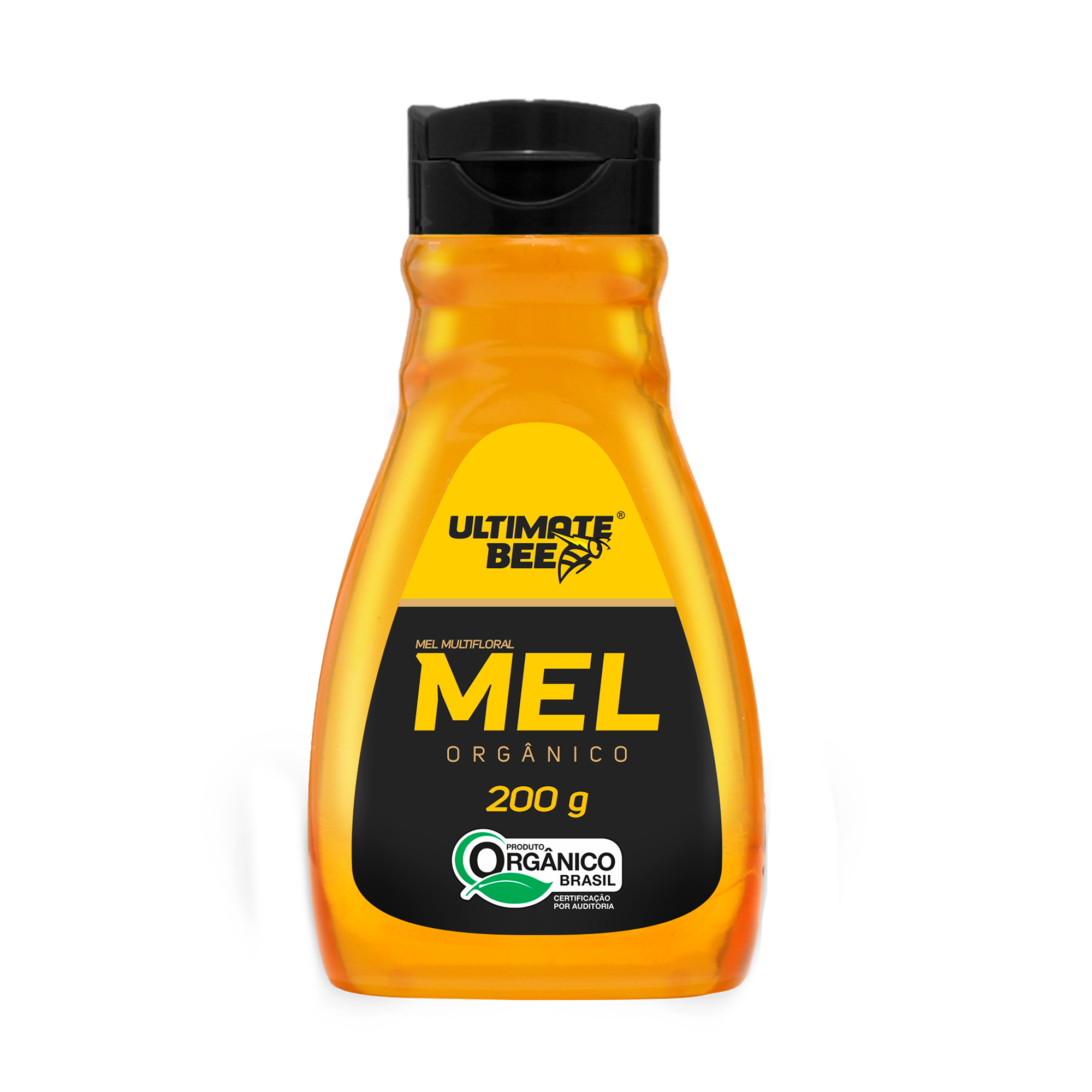
Ultimate Bee Honey is a natural and organic energy replenisher, without chemical additives and preservatives. It is practical, especially a quick source of energy, as it is easily absorbed by the body, guaranteeing natural energy for sports, helping with muscle recovery.
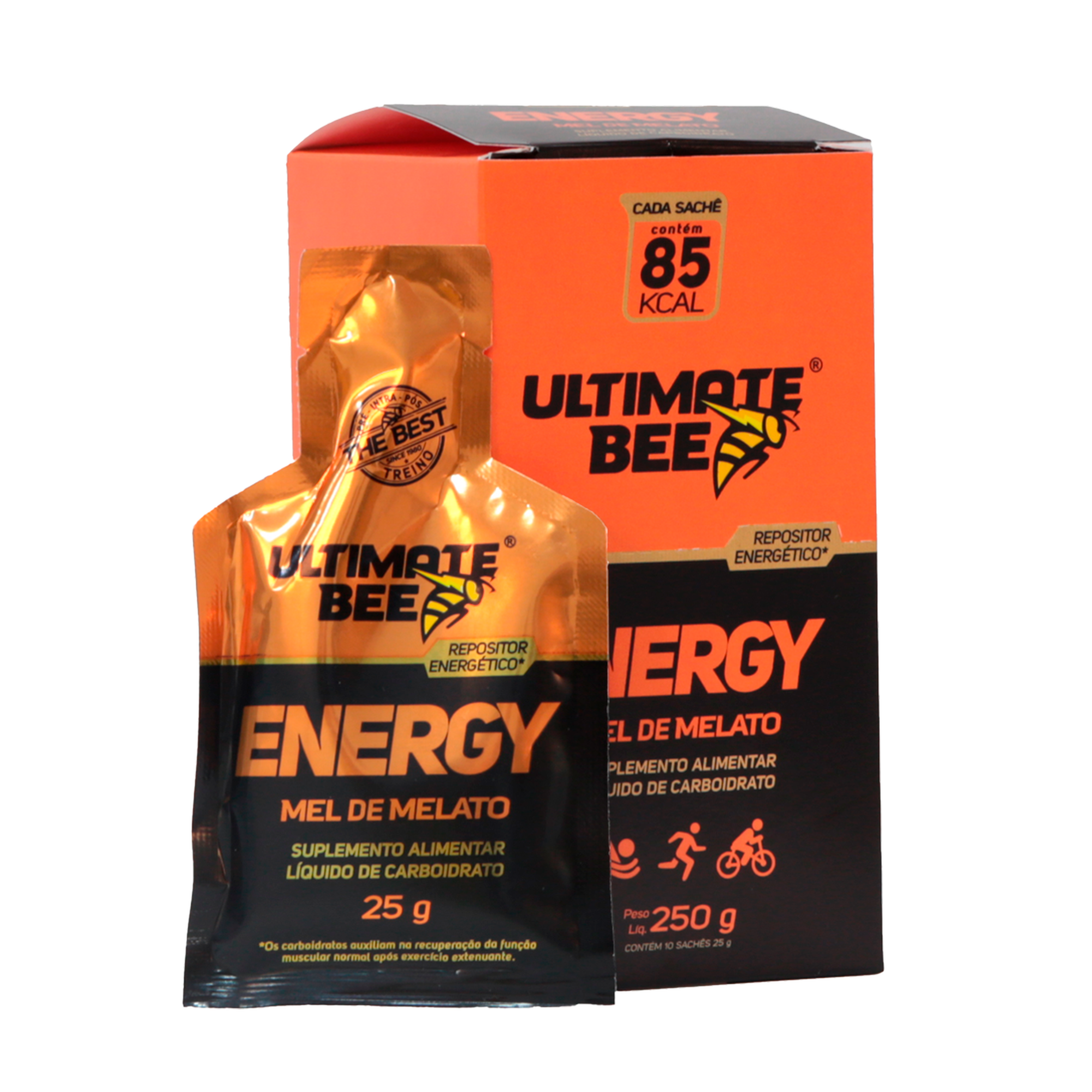
Designed for sports and wellness enthusiasts, Ultimate Bee Melato Honey is a natural source of energy, perfect for combating fatigue. With its intense flavor and non-crystallizing composition, it’s always ready to fuel your activities—ideal before, during, or after exercise.
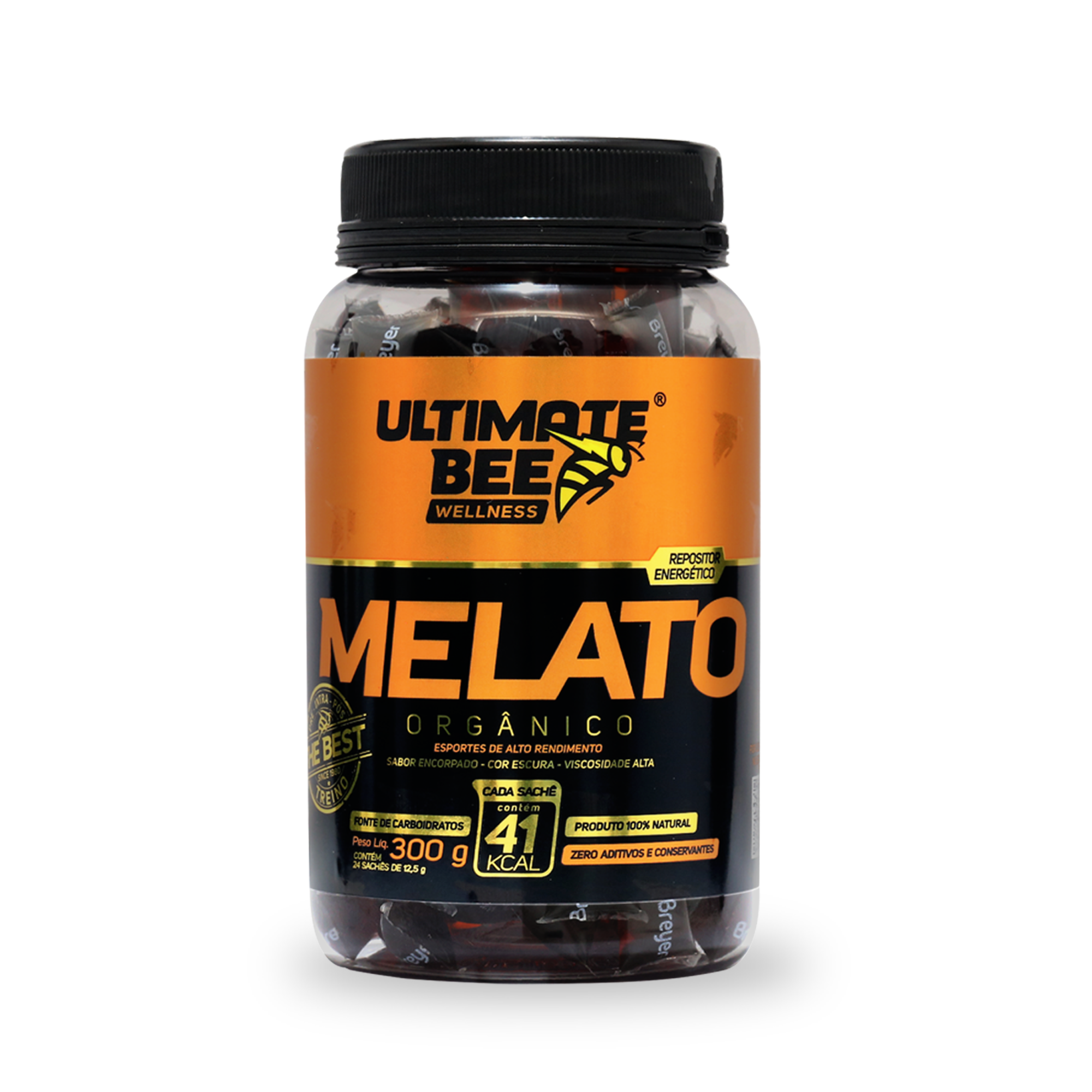
Melato Ultimate Bee has a higher viscosity, with a dark color (dark amber) and a full-bodied flavor. It has a different composition, with more minerals and vitamin C than most honeys, as well as phenolic compounds, which give it antioxidant and anti-inflammatory properties, excellent for muscle recovery.
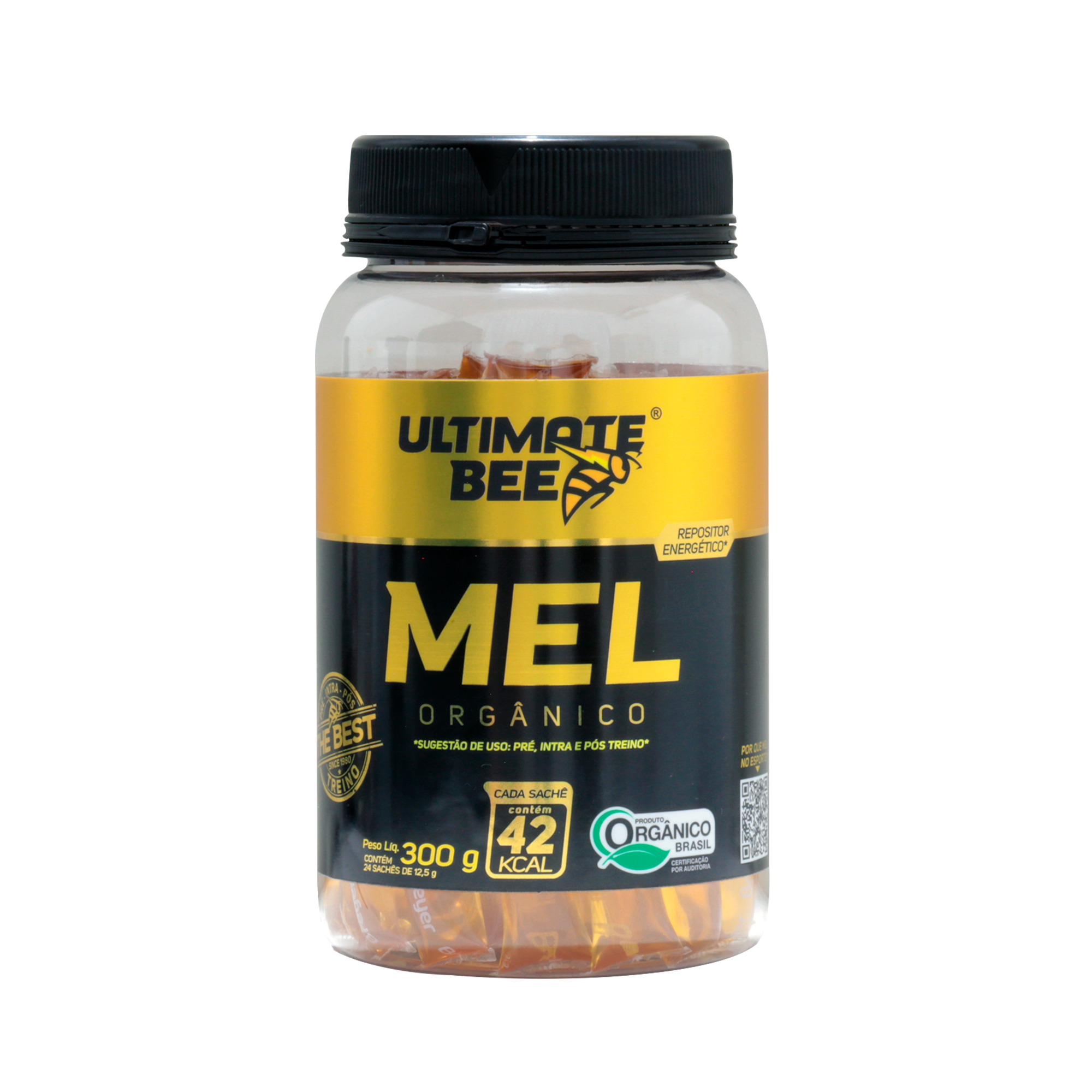
Ultimate Bee Honey is a natural and organic energy replenisher, without chemical additives and preservatives. It is practical, especially a quick source of energy, as it is easily absorbed by the body, guaranteeing natural energy for sports, helping with muscle recovery.
In professional sports, it is essential to consider various aspects for achieving the best performance, including equipment, preparation, nutrition, supplementation, and technical precision.
Propolis is a complex mixture, formed by resinous and balsamic material, collected by worker bees from different parts of plants, such as buds, twigs, flower buds, and exudates, with the addition of saliva secretions, wax, and pollen. Bees primarily use propolis to protect their hives from other insects and microorganisms.
Many people practice sports to take care of their health, and this care starts with healthy nutrition and supplementation. Ultimate Bee products are certified organic.
They are made from a selection of honey and melato collected by bees from native areas, free from chemical components.
Our care begins with the environment. The organic program is developed by Breyer in various regions of Brazil, prioritizing sustainability and ensuring natural and healthy products. The program establishes guidelines based on practices that adopt specific techniques in compliance with Brazilian, U.S., and European regulations.
Carbohydrate consumption during training or competition, especially when there is a need for energy, is crucial for an athlete’s performance and results.
Using Ultimate Bee Honey and Melato Sachets during sports activities is practical. The packaging can be opened with one hand, with minimal risk of leakage, allowing the athlete to use the product fully without losing concentration or focus during a competition. It provides healthy energy exactly when the athlete needs it, without wasting time or affecting performance.
Research describes green propolis as being rich in artepelin C (3,5-diprenyl-p-coumaric acid), a bioactive substance that, according to scientific studies, stimulates the immune system, helping inhibit tumor cell growth and increasing lymphocyte count in the body. Along with artepelin C, bacarin and p-coumaric acid stand out as important substances that have been linked to anticancer effects, particularly against breast and prostate cancer cell lines.
Consuming honey and melato before physical activity provides a slow and steady release of glucose into the bloodstream, helping prevent the body from using stored muscle glycogen as fuel. This conserves muscle glycogen reserves for longer periods, helping control fatigue. During exercise, honey and melato replenish blood glucose levels, increasing muscular power and enhancing performance. After training, they contribute to restoring blood glucose levels and aid in muscle recovery.
Research describes green propolis as rich in artepelin C (3,5-diprenyl-p-coumaric acid), a bioactive substance that, according to scientific studies, stimulates the immune system, helping inhibit tumor cell growth and increase lymphocyte count in the body. Along with artepelin C, bacarin and p-coumaric acid stand out as important substances that have been associated with anticancer effects, particularly against breast and prostate cancer cell lines.
Consuming carbohydrates such as honey or melato after a workout is a crucial step for recovery. During exercise, blood glucose levels can drop because muscles use the available glucose to generate energy. Carbohydrate intake restores these levels. Additionally, during recovery, muscles absorb the extra glucose to replenish their internal glycogen stores. Muscles also compensate by increasing their reserves for the next workout. If glucose is not available for the muscles at this time, the body may not recover as efficiently.
A própolis pode prevenir a cárie dentária, uma vez que demonstrou atividade antimicrobiana significativa contra microrganismos como Streptococcus mutans, Streptococcus sobrinus e Candida albicans, que envolvem doenças bucais28. Recentemente, um estudo com a própolis vermelha, mostrou propriedades antimicrobianas promissoras, que podem ser úteis no controle de doenças periodontais29.
A atividade antifúngica, com efeito em células planctônicas do gênero Candida (C. albicans C. tropicalis e C. parapsilosis) e prevenção da formação de biofilmes e erradicação de biofilmes já maduros30.
Pesquisas descrevem a própolis verde como sendo rica em artepelin C (ácido 3,5-diprenil-p-cumárico), uma substância bioativa, que segundo estudos científicos, estimula o sistema imunológico, auxiliando na inibição do crescimento de células de tumores e no aumento do número de linfócitos no organismo. Juntamente com artepilin C, destacam-se bacarina e o ácido p-cumárico, importantes substâncias as quais têm sido associadas a efeitos anticâncer, especialmente contra linhas celulares de câncer de mama e próstata.21
Some studies show that the use of amino acids enables their use in energy pathways and improves muscle function (AMENT et al., 2001; MENEGUELO et al., 2003). There is an increased need for protein intake for individuals engaging in physical exercise, as it contributes to energy supply during endurance exercises and is also necessary for muscle protein synthesis after exercise (Carvalho 2003). According to the Brazilian Sports Medicine Guidelines (HERNANDEZ and NAHAS, 2009), the protein needs of athletes have received special attention in recent decades because they are essential for repairing micro muscle injuries caused by physical activity. These needs increase based on the type of exercise, its intensity, duration, and frequency, with no clear definition regarding differences by sex. Strength exercises require a higher protein intake compared to resistance training demands. For individuals aiming to increase muscle mass, the recommended intake is 1.6 to 1.7g/kg/day. For sports where endurance predominates, proteins play an auxiliary role in providing energy for the activity, with daily intake requirements ranging from 1.2 to 1.6g/kg of body weight. According to the guidelines, the maximum consumption of this nutrient should be 1.8g of protein/kg/day, for both athletes and non-athletes (HERNANDEZ and NAHAS, 2009).
The chemical composition of bee pollen highlights the presence of phenolic compounds with antioxidant activity (Carpes et al., 2009). During physical exercise, due to the high strain on the body, free radicals are released, which lead to the aging of tissues and cells. To block or reduce these activities, it is beneficial for athletes to consume foods with antioxidant potential.
Estudos recentes apontam a alta capacidade antioxidante do pólen apícola (De Melo et al., 2018). Os compostos fenólicos têm sido considerados substâncias bioativas, havendo uma correlação positiva entre o conteúdo fenólico, especialmente flavonoides, e a capacidade antioxidante do pólen apícola (Leblanc et al., 2009; Mohdaly et al., 2015). Pesquisas realizadas com extratos de pólen apícola na região Sul do Brasil encontraram alto teor de compostos fenólicos e flavonoides com reconhecidas atividades biológicas, principalmente antioxidantes (Carpes 2008; Carpes et al., 2008) e apontam significativa quantidade de vitaminas do complexo B, sugerindo que este poderia ser uma boa fonte alimentar natural desses compostos e uma alternativa aos suplementos atualmente disponíveis (Rodrigues B, et al., 2019). As principais vitaminas antioxidantes encontradas no pólen são: B caroteno como pró vitamina A, vitamina C e E, as quais podem atuar diretamente no combate dos radicais livres, os quais podem limitar o desempenho durante a prática de exercício, porque são capazes de causar danos às células dos ácidos nucléicos e promover dor e fadiga muscular.
Estudos especulam que os radicais livres causam fadiga metabólica devido ao acúmulo de substâncias nas fibras musculares, o que interfere na liberação de cálcio ou na capacidade do cálcio de estimular as contrações musculares. Gomez Cabrera et al. (2005) especularam que os antioxidantes podem minimizar os danos oxidativos catalisando reações químicas para desintoxicar radicais livres nas células e eliminam diretamente espécies reativas de oxigênio de lipídios, proteínas e ácidos nucleicos desfigurantes da célula.
A capacidade antioxidante deste alimento é superior ao observado para os frutos reconhecidos como fonte alimentar de antioxidantes; consequentemente, sua o consumo pode ser benéfico para a saúde humana. A capacidade antioxidante dos produtos foi superior a relatado para algumas frutas vermelhas, que são reconhecidas como uma dieta fonte de antioxidantes (De Melo et al., 2018 a e b). Estudos realizados por Ping e colaboradores (2018), apontam a suplementação de pão de abelha pareceu melhorar o desempenho na corrida e aumentou o status antioxidante total em atletas recreacionais.
É considerado um dos mais ricos e puros suplementos alimentares naturais13, podendo ser utilizado como complemento alimentar na nutrição humana, pois é uma importante fonte de proteínas7, sendo referido como o “único alimento completo”, pois contém todos os aminoácidos essenciais que os seres humanos necessitam: histidina, lisina, triptofano, fenilalanina, metionina, treonina, leucina, isoleucina e valina7,14,13, ou seja, aminoácidos que o organismo não consegue produzir e depende da ingestão alimentar. Também apresenta substâncias flavonóicas em significativas quantidades15, resultando em um produto de alto teor nutritivo. O pólen apícola tem uma composição química que o constitui como um alimento de rico valor nutricional que traz benefícios para saúde, possuindo mais de 200 substâncias, oriundas de diferentes espécies de plantas8.
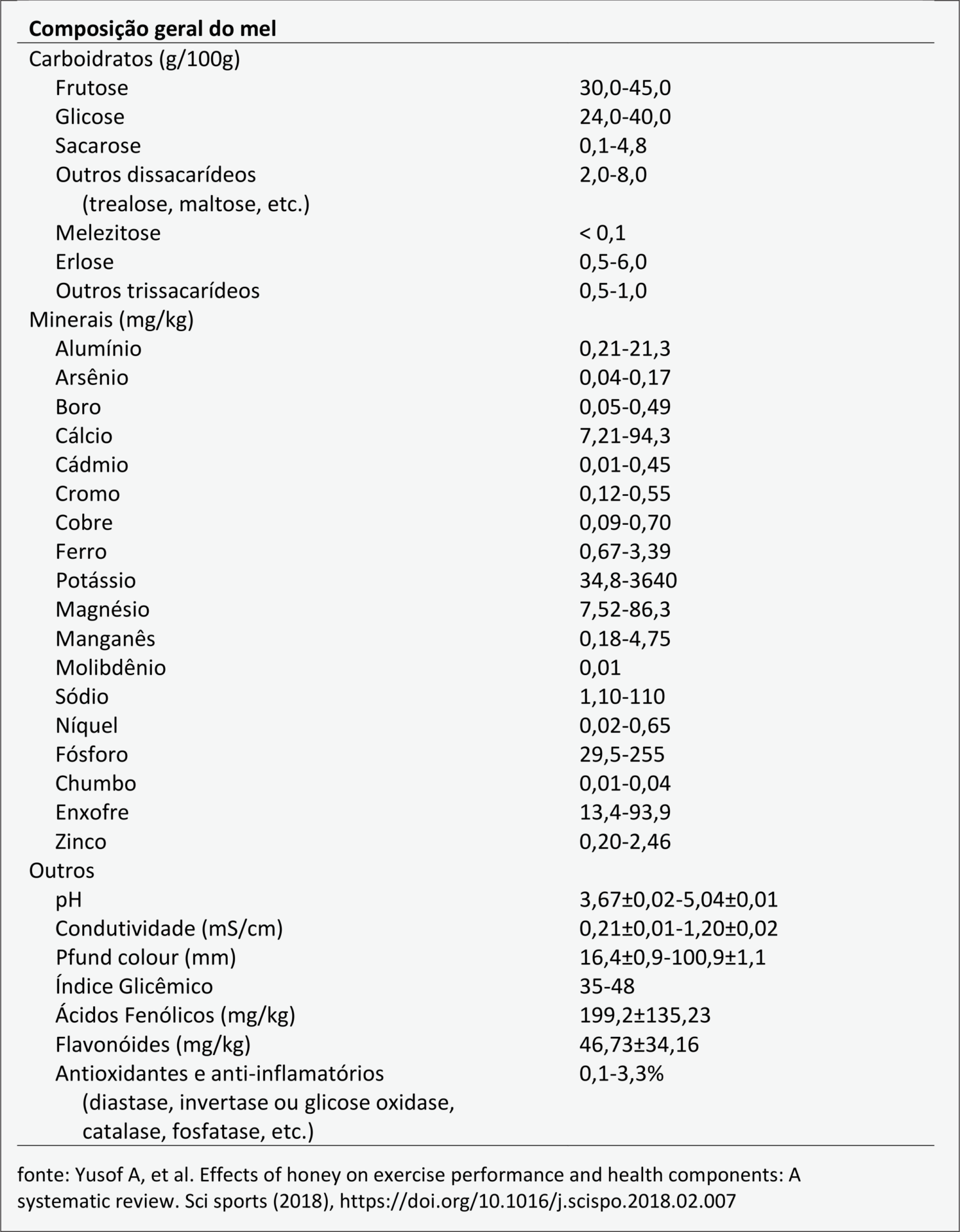
1 Martins M. Interação entre Tachardiella sp. (Homoptera) e Mimosa scabrella Benth. (Leguminosae) e a produção de Mel de Melato por Apis mellifera L. (Hymenoptera). Universidade Federal de Santa Catarina. 2005.
2 Mazuchowski JZ, Rech TD, Toresan L. Bracatinga (Mimosa scabrella Bentham). Cultivo, manejo e usos da espécie. Empresa de Pesquisa Agropecuária e Extensão Rural de Santa Catarina (EPAGRI). 2014.
3 Azevedo MS. Mel de Melato de Bracatinga (Mimosa scabrella Bentham) do Planalto Serrano de Santa Catarina: Discriminação e Potencialidade Funcional. Universidade Federal de Santa Catarina.
4 Yusof A, et al. Effects of honey on exercise performance and health components: A systematic review. Sci sports (2018), https://doi.org/10.1016/j.scispo.2018.02.007.